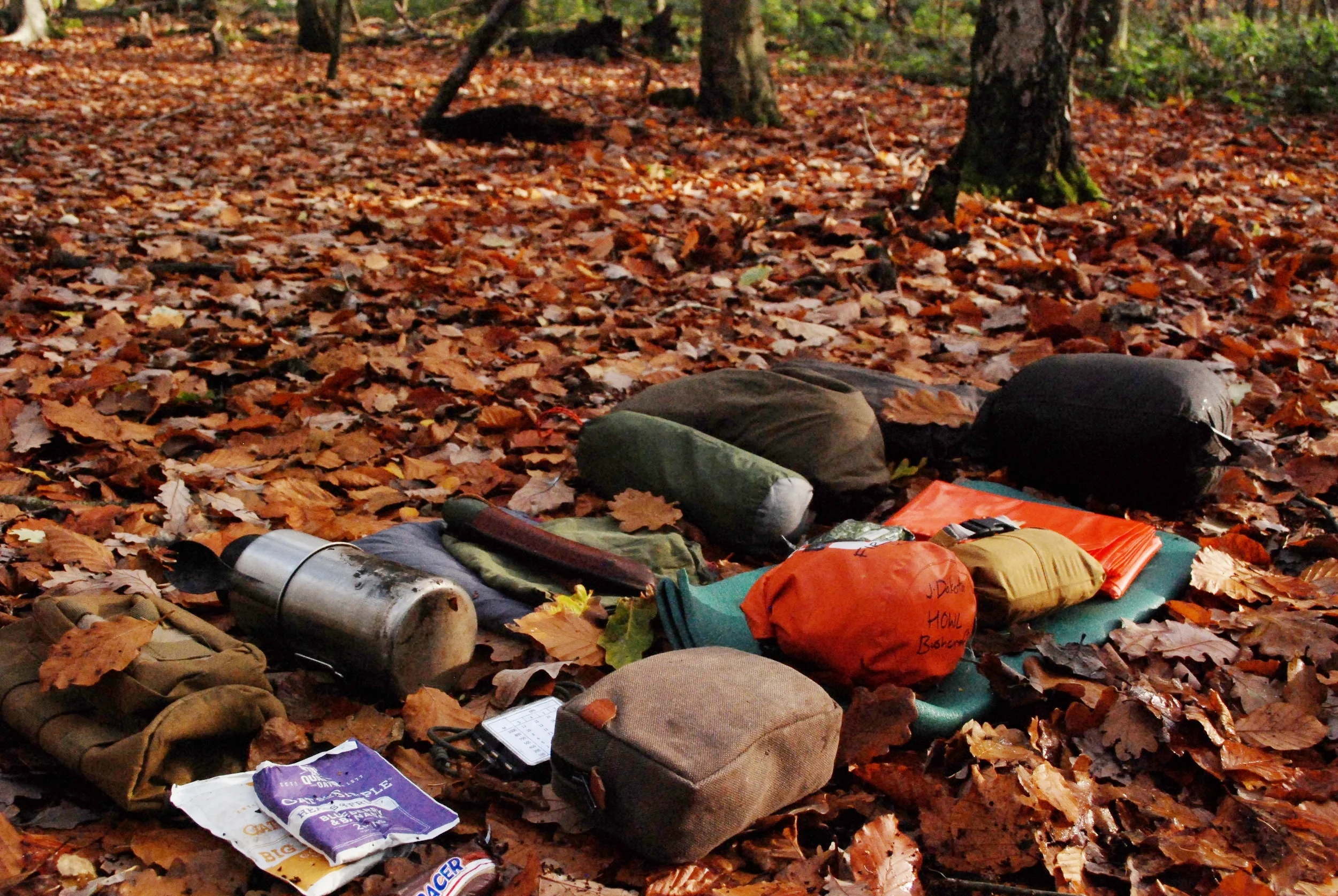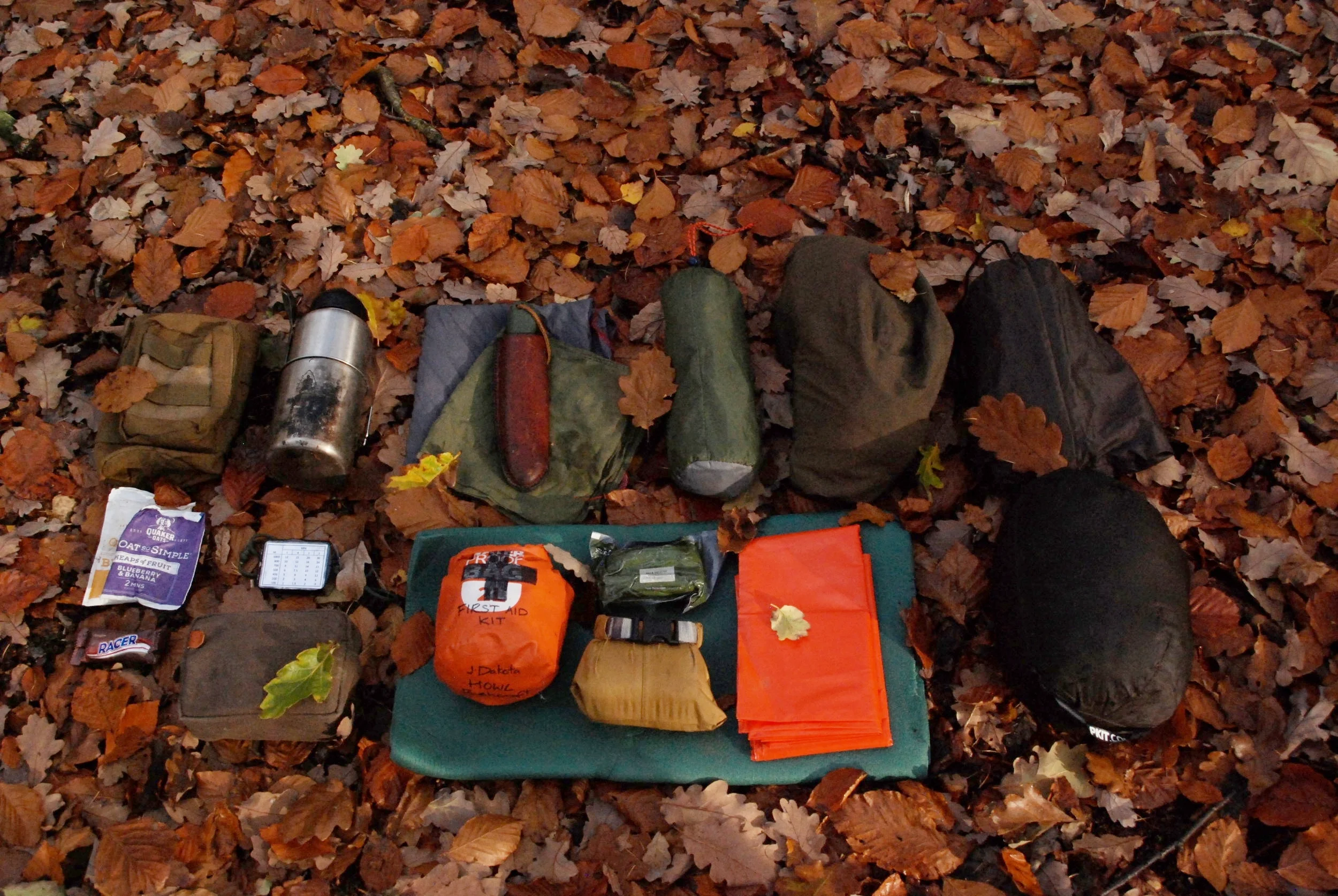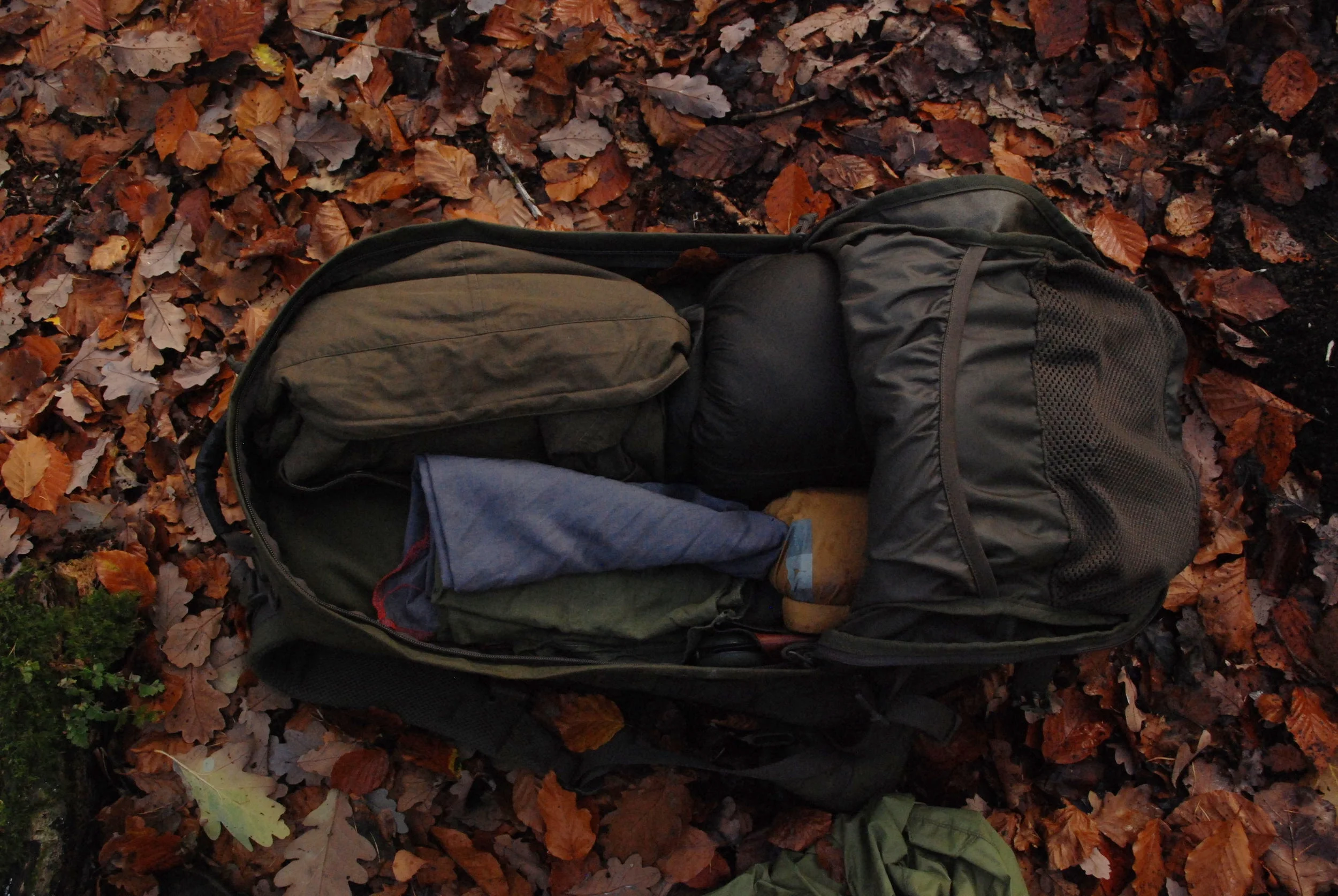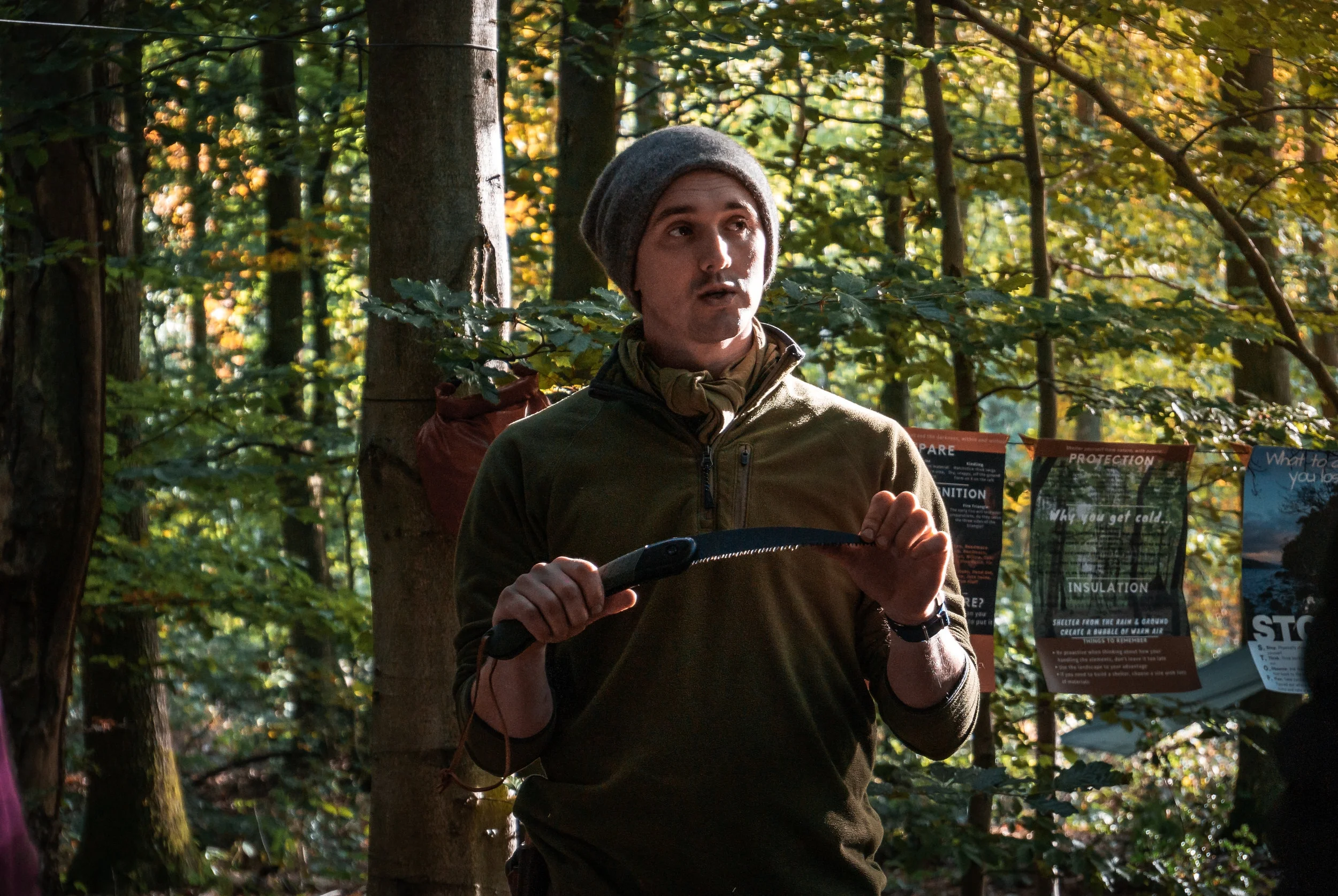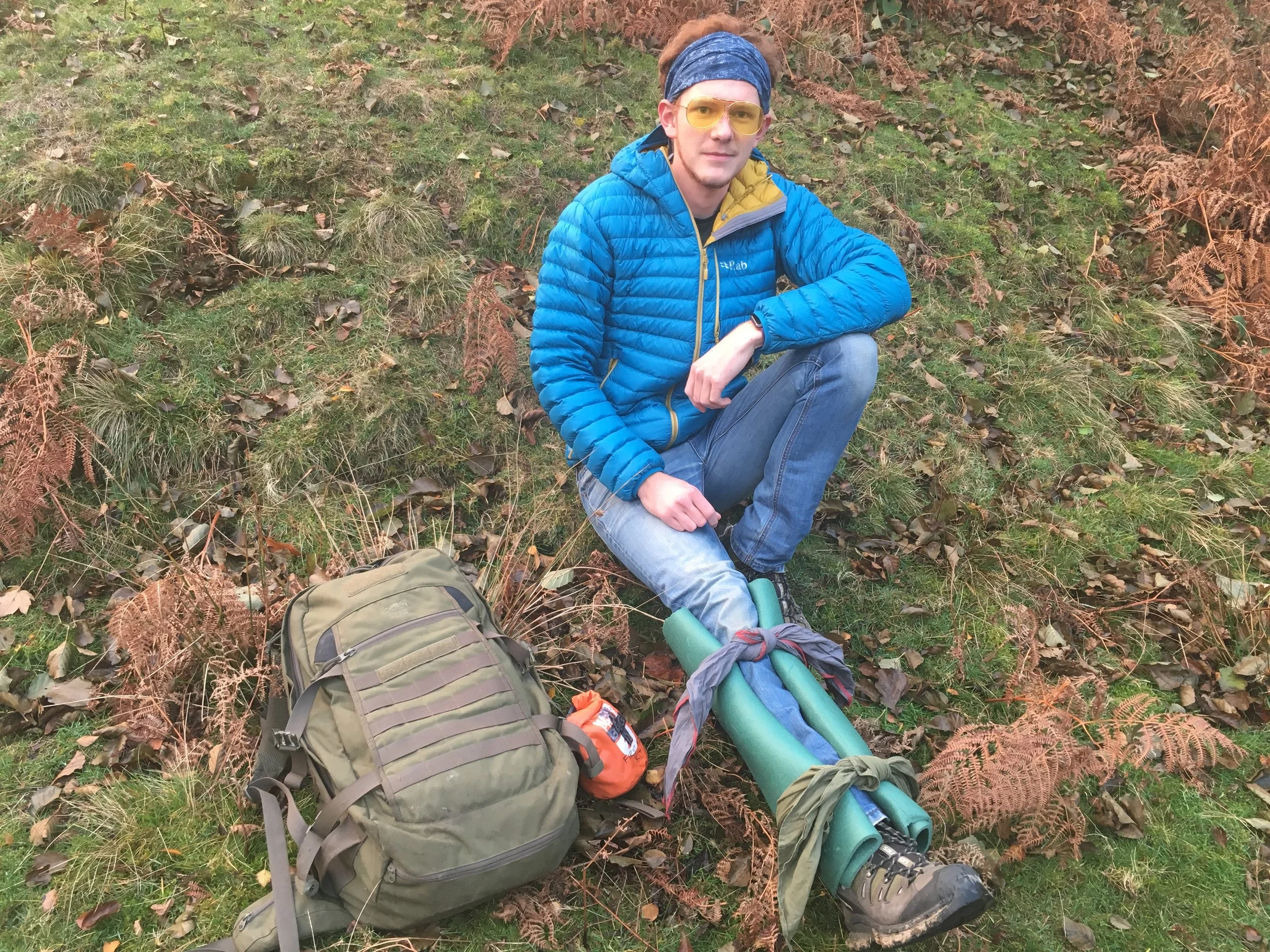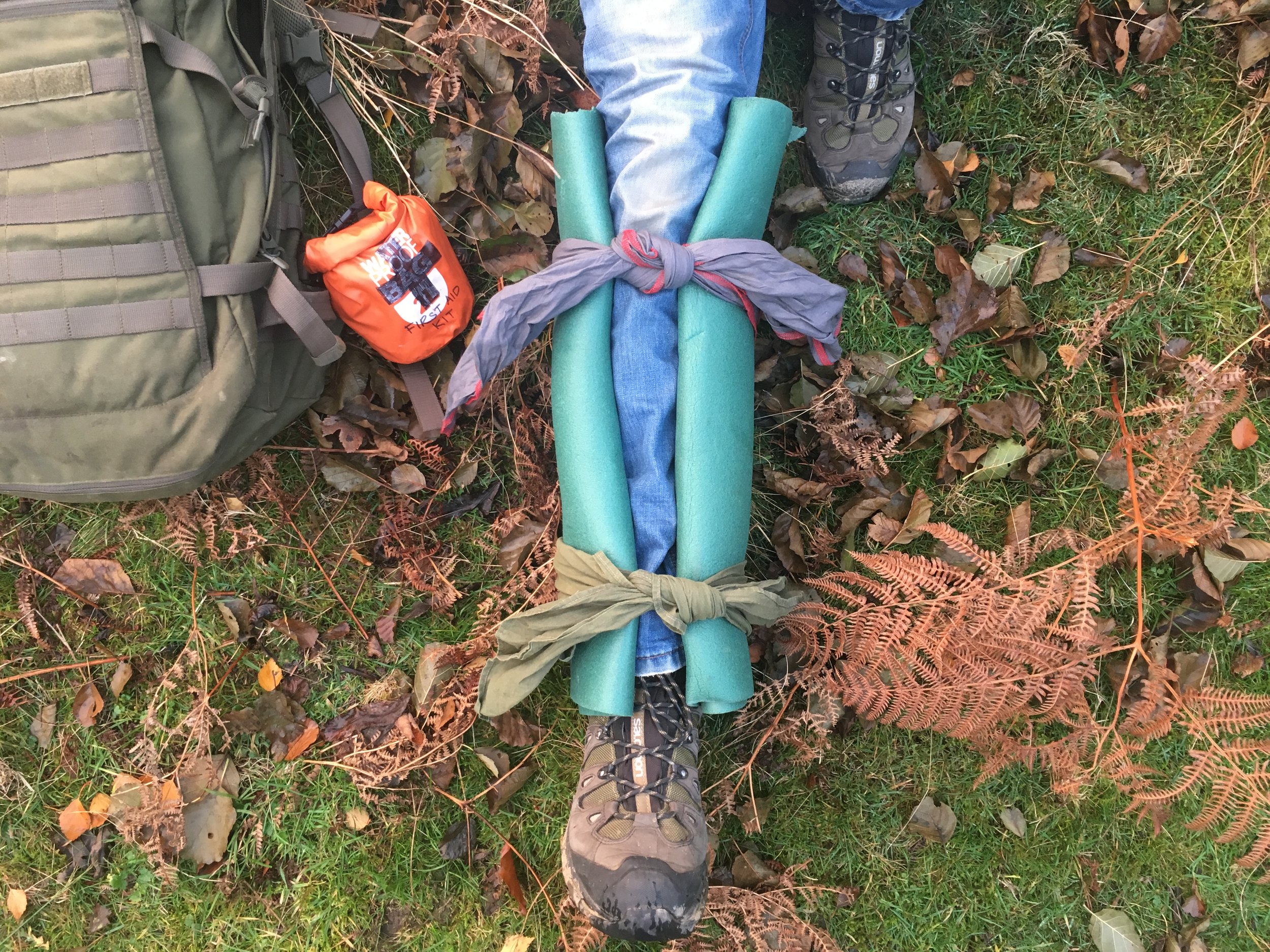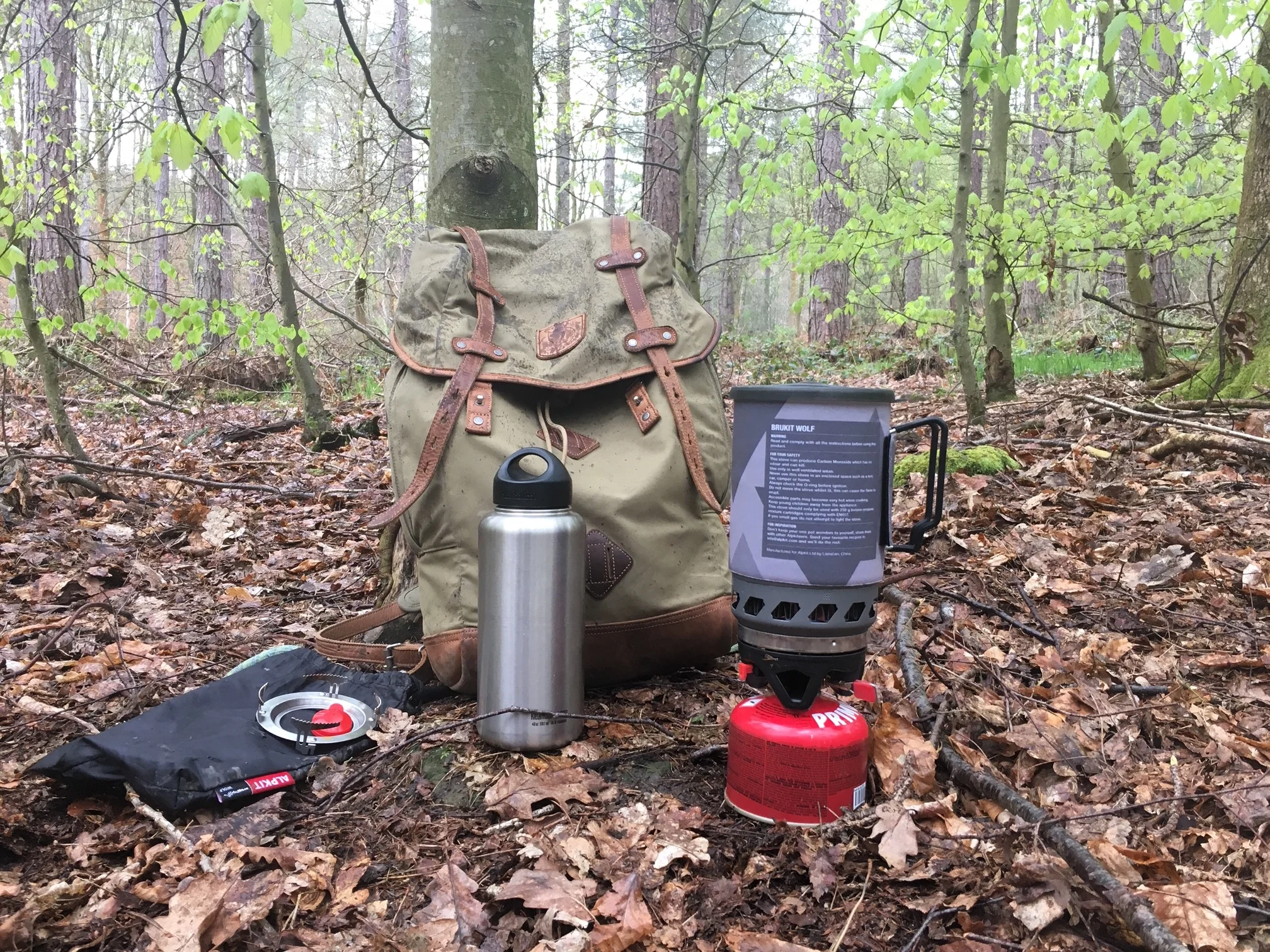What to Carry in a Rucksack - Single Day Use
Jamie Dakota
One of the attractions of the outdoors for me is the sensation of having everything I need in my rucksack and the wanderlust of the open trail ahead of me. Safe in the knowledge that my bushcraft is sufficient that I may if need kindle a fire in any weather, that I might make shelter against the cold and rain, and that I can in a pinch source water and produce a warming tea from seasonal leaves.
The beauty of bushcraft skills are they reside in the mind, and carry only the weight of a few million neurons.
Building a woodland shelter like this is a wonderful way to stay outdoors, and can be employed when you might not have planned to stay out over night…but bear in mind a shelter such as this can take several hours to complete, in the growing dark and it would be simpler to carry a tarp in your rucksack.
Of course most often I’m simply following the route I planned out days before, I’ve lunch packed into my rucksack and my shelter should I need one when I stop to eat is a lightweight tarp strung between the trees. As such having a few choice pieces of equipment in my pack makes life a little simpler, rest-stops a little swifter, and unexpected detours a little easier to bear.
What I carry in my day-sack features in both our Primary and our Itinerant Courses, as guidance for those new to the outdoors and hopefully provides some food-for-thought regarding planning and the reality of staying out unexpectedly at night.
I hope this article may prove useful to you, whether as a simple check-list or as the starting point for your own setup.
Water bottle and Metal Mug with a few drinks sachets and a set of water purification tablets
Folding saw
Bandanas - always useful, from a neck-scarf to a wound dressing/ tourniquet, or to simple make collecting leaves for a shelter much quicker. I always have a couple in the rucksack.
A warm hat, gloves and buff
Waterproof coat – A heavyweight one here as I’m in the woods
Waterproof trousers
A couple of oats packets and energy bars – these make a huge difference for minimal weight should I be out longer than planned.
Compass – I’d also add a map if I was heading further afield.
Belt pouch containing a Head Torch, Firesteel, and other small items to keep them together
First aid kit – this is the compact group kit I carry during courses
Field dressing
Toilet bag- tissues, hand sanitizer and a lighter (also makes great emergency tinder)
Survival Bivi bag
¾ length foam mat – packs up small, weighs almost nothing
Warm jacket/ jumper – at all times of year an extra warm layer, in this case a Belay Jacket, is a good way to stay warm should the temperature drop.
Heavier stuff packed closer to my back help with comfort and balance.
This pack has a two-layer system, so lighter gear goes in the outer section.
A tough water bottle was always going to feature in a ‘what to carry’ article, but you might consider taking a lightweight metal mug also. Should you find you need to produce more drinking water or are stuck out overnight then a metal mug will prove invaluable in boiling water by a fire. In the molle pouch I also have a few sachets of coffee, a metal spoon and a packet of purification tablets so that I may sterilise water without boiling it if need be.
A folding saw can make many tasks much easier than they would be without one, whether you’re cutting a stick to help brace a sprained ankle or building an impromptu woodland shelter. My preference is for a saw with a flexible blade, such as the Laplander, where a bent blade can be straightened when a snapped stiff blade is useless.
The first aid kit, roll mat and survival mat are in my pack mostly to help take care of others should I need them. In all likelihood, given that you’re currently reading a ‘what to pack’ article ahead of going out, you’re probably the sort of person that is well prepared when going in the open country and the chance of you needing to bivi out unexpectedly is somewhat diminished by the preparedness. However, there will always be those that go out less prepared, and after all accidents can befall anyone outdoors, it is therefore not unlikely that you may come across someone in the course of your hike that is lost or hurt and in need of help. It is my opinion that as a prepared individual I should be in a position to be useful to my fellow traveller should they need aid, and in some small way the more first aid kits and considerate people there are outdoors the better off we’ll all be should an accident befall anyone while out on the trail.
A friend volunteering to demonstrate the use of the roll mat and a couple of bandanas as a leg splint for a broken tibia, applied lower this also works well to support a sprained ankle. It is this multi function that has meant I’ve replaced the SAM splint in my rucksack with the roll mat.
The orange survival bag not only protects us from the wind and rain, the major contributors to hypothermia via convective and evaporative heat loss, but also acts as a large brightly colour signal to rescuers should Mountain Rescue be searching for us. These bags are also much thicker and tougher than the reflective survival blankets on the market, and given that radiant heat loss is a relatively small factor in hypothermia the benefits of the orange bag make it my preference for the day pack.
The mat is a relatively new addition to my rucksack. The reasons for me carrying a ¾ length roll mat are chiefly this: in the event of my finding a casualty outdoors, being able to insulate them from the ground will not only help stave off hypothermia but also make them considerably more comfortable. Add to this the time it will save should I need to build a shelter by not needing to collect any additional bedding material, and if nothing else I have a dry and warm seat for lunch stops, it’s a sensible inclusion in the kit list.
This technique I was taught during my last outdoor first aid course by Will Legon, one of the best first aid courses I’ve ever attended.
As I mentioned in the introduction, I also carry a super-light tarp in the rucksack.
You might also consider a flask for hot drinks at this time of year, I’ve found those made by Klean Kanteen to be excellent and well worth the expense. And a small stove, such as a Brewkit by Alpkit, is often an addition to by kit.
Here the tarp is packed up small, my pocket knife for scale.
A few items that I typically keep together in the belt pouch, most importantly for this list is the head-torch and spare batteries. I also keep a firesteel, pocket knife, and sharpening stone in here too. I’ve written a full article for Journeyman Handcraft on the contains of this beautiful little pouch.
That is the baseline of what I include pretty much everyday in my rucksack, perhaps a lighter warm layer in the summer or extra mittens etc in winter but this is my go to setup.
I’d love to hear you carry in your day-sack, or if you have any suggestions I may not have thought of, so please leave a comment below.
All the best
JD
